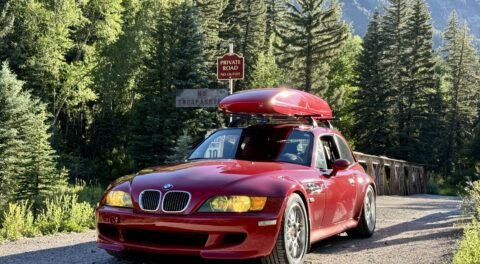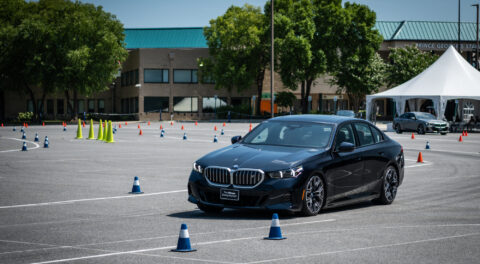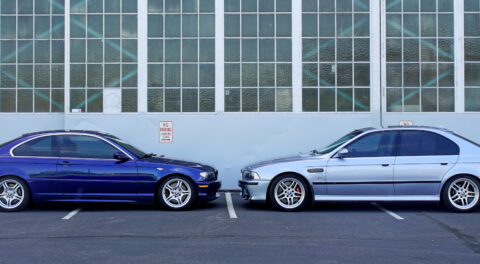The BMW M2 is the most popular M car available right now. It’s also the most affordable, but for those in search of a modern ultimate driving machine that embodies all of the things that made BMW great during yesteryear, the M2 is universally agreed to be an excellent choice to put in the garage. No matter the specific sub-model you end up with, the M2 has everything that has made special BMWs great for decades, like flared fenders, model-specific aero, and a more powerful engine with a unique personality along with the appropriate suspension and braking bits necessary to support all of the improvements.
Since it arrived for the 2016 model year though, things have changed rapidly, and with the announcement of the M2 CS, the F87 platform has run its course. The next M2 will be of an all-new generation on a brand new platform, which is reportedly designated G87. With the final installment now in place, and considering how early M2s have depreciated nicely, we thought it might be a good time to examine what sets each one apart, what they share in common, and which one might be right for different kinds of drivers. Check out how the M2 changed over the years below.
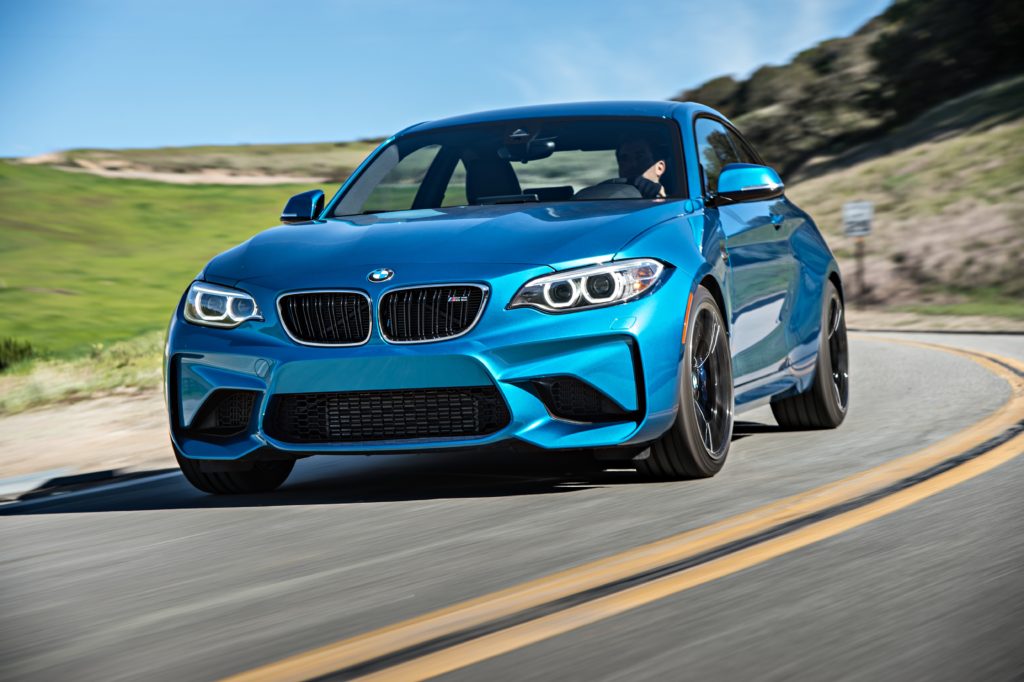
The first photos of the original M2 began to surface during the summer of 2015, and when it was officially announced later in the year, it was initially met with divided reactions. Enthusiasts were skeptical of an M car lacking many M-specific facets many of us have become accustomed to, like special seats, aerodynamic mirrors, and most importantly, the engine. The initial M2, available for the 2016 through 2018 model years, comes powered by an N55 turbo six-cylinder, an engine that initially entered the BMW lineup back in 2009.
The N55B30T0 used in the M2 was no conventional N55 though, as it is the most powerful of the line up, offering 365 horsepower at 6,500 rpm and 369 pound-feet of torque from 1,450 to 5,250. A version of the N55B30T0 was also used in the previous generation X4 M40i, albeit with noticeably less power, and with none of the internal changes that benefit the model-specific unit used in the M2. In comparison with other versions of the engine, the M2’s N55 uses a forged crankshaft and connecting rods, pistons from the S55 of the M3 and M4, cast-iron cylinder liners, a different oil pan, and a redesigned oil pump to cope with high lateral loads experienced during dynamic cornering. Spark plugs are shared with the S55, and intake and exhaust manifold routing are also flow-optimized, a change that made one of BMW’s best-ever sounding engines even more captivating.
Running gear, including the axles, control arms, struts, shocks, subframes, wheel carriers and more also come courtesy of the contemporary F80 M3 and F82 M4, and when the first road tests and reviews of the M2 were published, it was clear that the sum of all the parts came together to create what was, without question, a legitimate M car. Official production and sales figures are not available, but it’s been said that the original M2 was good enough to be the most popular and hottest selling M car in 2017 and 2018, a spot that’s now occupied by its replacement, the M2 Competition.
An incredible performance value proposition from new, the advent of a replacement model, along with the evolution of the 2 Series itself, most specifically the M235i becoming the M240i, and of course the accumulation of years and mileage, have allowed the original M2 to depreciate into enticing territory. While the most affordable examples are currently advertised in the high $30,000 to low $40,000 range, a nice, low mileage one doesn’t cost much more, and all but the absolute oldest models still have a decent bit of factory warranty remaining. There are other, more powerful but older M cars available for comparable or less money, but the M2 comes with BMW’s best currently-available driving experience, and a suite of technology that’s only been incrementally improved upon since.

The arrival of the Worldwide Harmonized Light Vehicle Test Procedure (WLTP) back in 2018 (at least in part) killed off the N55, and forced BMW and numerous other manufacturers to adopt the use of stifling particulate matter exhaust filters in their other production engines. Retrofitting the equipment into the existing N55 design would have required redesigning the underside of various models, and when it came to the M2, BMW used the tightening of emissions regulations as an opportunity to replace the short-lived M2 LCI—which benefitted exclusively from slightly updated aesthetics—with the S55-powered M2 Competition.
Now equipped with the M twin-turbo inline-six power plant of the M3 and M4, albeit in a lesser state of tune, the M2 Competition could quiet the few remaining doubters, while offering marginally increased performance. Compared with the 425-horsepower N55 used in the M3 and M4, the M2 Competition uses a version that develops 405 horsepower from 5,250 to 7,000 rpm, with 405 pound-feet of torque available from 2,350 to 5,200—redline arrives at 7,500. The engine bay also gained the gorgeous carbon-fiber strut brace of the M3 and M4, while supporting changes included an improved cooling system, a model-specific exhaust system, and programmable M buttons on the steering wheel to transform the driving experience at a moment’s notice.
The M2 Competition also comes with larger brakes. While the M2 employed its own specific set of large high-performance brakes with M compound pads gripping 380mm and 370mm rotors front and rear by way of four- and six-piston calipers respectively, standard on the M2 Competition are M Sport brakes, which make use of six- and four-piston calipers, which bind 400mm and 380mm rotors front and rear. Shortly after the official M2 Competition announcement, the M Performance parts catalog gained the M Sport Brake System Red, as BMW branded it, an upgraded system for the M2 Competition that offers internally ventilated and perforated rotors with aluminum front calipers and special long distance Motorsport pads at all four corners.
Speaking of M Performance parts, the M2 Competition marked a distinct change for the array of offerings, which now include substantial suspension upgrades in addition to the brake hardware explained above. Most importantly, however, are the available carbon-fiber pieces, which went beyond the standard assortment of largely aesthetic bits to include a hood, trunk lid, and roof, the latter of which is quite noteworthy.
Depreciation hasn’t hit the M2 Competition just yet, as the model is still just a bit too new, but we’ll certainly be excited when it does. If you absolutely need an S55-powered M car in the mean time, the first few model years of the M3 and M4 are starting to drop into the same range as a pre-owned N55 M2, but you’ll have to accept a trade-off in the form of higher mileage and a bit more wear.
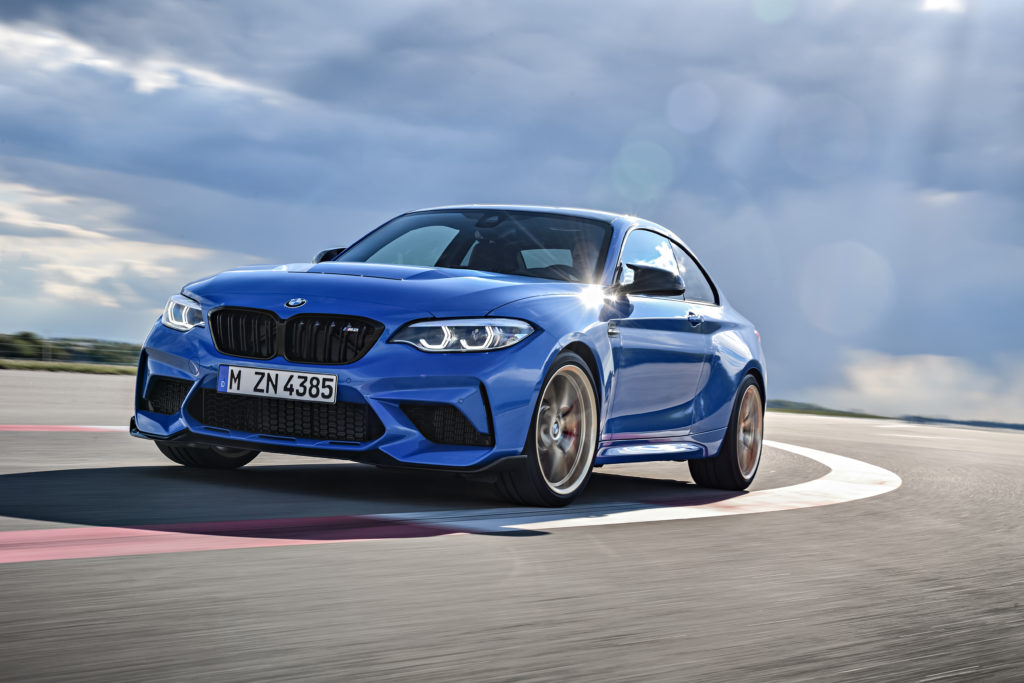
With the end of the current 2 Series platform (which had arrived for the 2014 model year) and the F87 on the short term horizon in 2019, it was time for a limited-production send-off. This takes the form of the M2 CS, which will go down as the most powerful version of the F87. Announced in October with limited production scheduled to commence during March of 2020, the M2 CS once again follows suite, and achieves its increased performance by way of the M3 and M4 parts bin. Rather than upgrade to the 425-horsepower S55 M inline-six of the its stablemates though, the M2 makes do with the 444-horsepower unit used in the M3 and M4 Competition Package. Specific output is 444 horsepower at 6,250 rpm, while torque remains unchanged with 405 pound-feet plateauing from 2,450 to 5,500.
The M2 is advertised as being a decent bit faster than its Competition stablemate though, and this is likely attributable to weight savings yielded by the use of carbon-fiber reinforced plastic in places like the hood, roof, and aerodynamics. The interior is also a bit more track focused, with more carbon fiber used in the cabin in places like the door pulls and the entire center console, which is sure to be a sought after item once these cars age and parts start to become NLA. Brakes follow the same incremental upgrade path as well, with the M Performance M Sport Brake System Red fitted standard, and M Carbon-Ceramic brakes offered optionally.
While the M3 and M4 CS models differentiate themselves by using the most powerful non-water-injected variant of the S55 with 453 horsepower, they are exclusively available with M DCT as the sole drivetrain configuration. The M2 CS, on the other hand, caught the attention of enthusiasts fresh out of the gate, thanks to BMW deciding to offer it with a six-speed manual as the base transmission choice. Perhaps the most noticeable change from the F87 lineage for the M2 CS was the launch color; instead of Long Beach Blue, which was a favorite on the original and Competition, the CS has been making the rounds in Misano Blue.
Pricing of the M2 CS has not yet been announced, although the model was officially unveiled during this year’s Los Angeles Auto Show. Production is said to be limited with around 2,200 produced in total, and as few (or as many) as 500 intended for U.S. shores. Of all the models, the CS will likely hold its value the best, although future automotive market trends and tastes remain anyone’s guess at this point. No matter what though, you can’t go wrong with any of them.—Alex Tock
[Photos courtesy BMW AG.]


